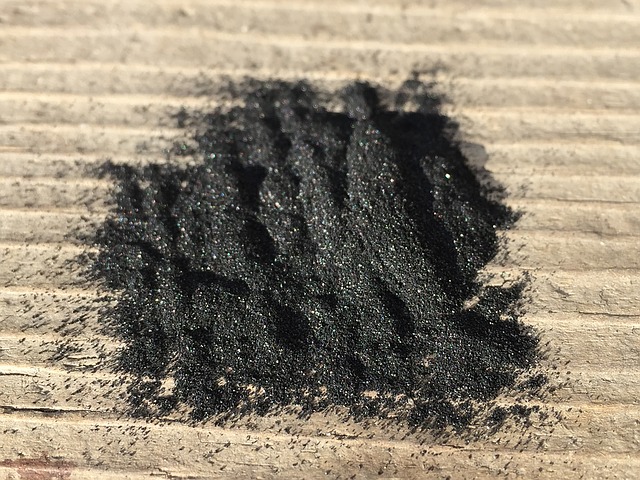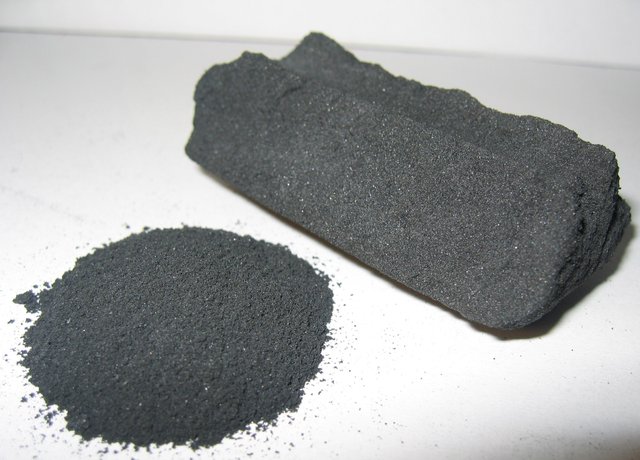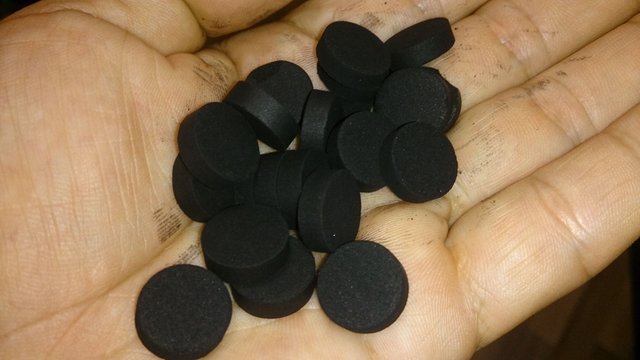Activated Charcoal: Its Preparation and Benefits to Humanity
Activated charcoal which is also referred to as activated carbon, is a carbon that is processed to have pores of low volumes and surface area that is large which makes it available for chemical or adsorption reaction. Being activated simply means being active. High surface area is the prerequisite for sufficient activation level to be attained for useful application. However, adsorption properties are being enhanced by further chemical treatment.

The main raw material through which activated carbon can be made are substances with high carbon content such as wood, coconut shell, and coal. Derived from charcoal is activated carbon while activated coke and activated coal is derived from coke and coal respectively. The characteristics and performance of activated carbon is dependent on the type of raw material used.
Classification of activated charcoal
Based on some criteria like behavior, surface characteristics and other fundamental criteria, activated carbons are not easily classified because they are complex products. However, for general purpose some classification is made, which is based on its size, industrial applications and methods of preparation.
Granular Activated Carbon (GAC): This type of activated charcoal is applicable in both gas and liquid phase because they are proper carbon for gases and vapor adsorption and diffuse rapidly. Compared to powdered activated carbon, granular activated carbon has particle size that is relatively larger and consequently, it has external surface that is smaller with sizes range from 0.2-5mm with irregular shaped particles.

Powdered activated carbon (PAC): This type of activated carbon with size less than 1.0mm usually exist as powders or fine granules and it is applicable in liquid phase and treatment of gas flue. It usually has small diffusion distance with large surface area to volume ratio. PAC is composed of ground or crushed carbon particles of which 95-100% of it will pass through a mesh sieve that is designated.
PAC is not commonly used in a dedicated vessel as a result of high head loss that would occur. In contrast, PAC is directly added to units of other process, like raw water intake, clarifier, rapid mix basins and gravity filters.
Extruded Activated Carbon (EAC): EAC is made by fusing binder with powdered activated carbon to form a cylindrically shaped activated carbon. It has a diameter of between 0.8-5mm. Because of low dust content, low pressure drop and high mechanical strength of EAC, it is usually used for gas phase applications.
Bead Activated Carbon (BAC): BAC is supplied in diameters approximately from 0.35-0.80mm and it is made from pitch of petroleum. BAC is similar to EAC in the sense that it also has high mechanical strength, low pressure drop and low dust content, but with grain size that is smaller. It is preferred for fluidized bed applications like purification of water because of its spherical shape.
Preparation of Activated Charcoal using Coconut Shell
The first step here is the collection of coconut shells. These shells are cut into pieces that are small, after which you will remove all dust attached to it by washing it with ordinary tap water. You will then dry it for 15-20 days in the sunlight. In order to remove moisture and other volatile impurities, then you will keep the dried shells inside the furnace for 24hours at 1500C.
You will now crush it with crusher that is locally made and sieve it to a size range of 300-700μm. Then, the powdered precursor will be activated chemically with ZnCl2 to make the ratio of impregnation (Activating agent/precursor) 100%. This can be done by mixing very well 3000ml of concentrated solution of ZnCl2 that contains 500gm of ZnCl2 with 500gm of dried precursor.
You will mix very well the slurry form of the powder precursor and keep it for proper soaking of ZnCl2 on its surface for 24hours inside an oven at 1000C. ZnCl2 is used because it is dehydrating agent that reduces the temperature of carbonization during chemical activation and promotes carbon charring likewise restrict tar formation.
The impregnated chemical samples that results from the above mixing will be put inside iron pipe that is galvanized and then kept inside a muffle furnace. You will now heat the material inside the furnace at a heating rate of 10°C min-1 to 6500C which is the final carbonization temperature under the flow rate of nitrogen at 120 cm3 min-1 STP. The material at 6500C will be kept for 1hour inside the furnace. Then, at constant flowing of nitrogen gas it will be cooled till it is completely cooled.
You will now wash the dried material with 0.5N HCl for 2-3 times after which you will wash it with distilled water that is warm in order to remove different residual mineral and organic matter. Then, you wash it till the solution becomes neutral with cold water. On the final note, the sample will be dried inside an oven and packed in an air tight container at 1000C for 24hours.
Activated Charcoal Benefits
The following are the benefits of activated charcoal;
Remedy for Poison and Toxin
Activated charcoal from studies has shown to be most effective decontaminant available for gastro intestinal track. Up to 50-60% of unwanted substances can be adsorbed by this activated charcoal in the stomach if after ingestion it is taken quickly.
Poison control center or hospital should be contacted by anybody that is exposed to toxic substance or poison and follow their instruction. There was a situation where a poisoned individual was told by poison center to take activated charcoal at home and later come for follow up. Purification power of activated charcoal accounts for the reason it is used as filter for air and water.
Care for mouth
Activated charcoal is beneficial for oral health as a result of the same properties that makes it also beneficial to the digestive system by removing harmful substances. Toxins are not neutralized by activated charcoal, but to the tiny pores on its surface they bind to.
It can bind to bacteria and other toxic substances and remove them from the mouth when used in powder, toothpaste, and oral health rinses. Because in only few uses it binds with substances that stain teeth and whitens it. So, some people like using it in this manner.
Ingredient of beauty products
Lately, many of the beauty products contain activated carbon as part of its ingredients. This is as a result of its effectiveness in removing chemicals, bacteria, build up and dirt on skin.
Ways Activated Charcoal Can be Use
Activated charcoal can be kept in the house or hand bags in case of accidental ingestion of household chemicals or toxins. Although, toxins should be kept out of house completely.
Activated charcoal finds uses in many of the following ways:
Natural Teeth Whitener
This use of activated charcoal has been tested and it worked wonderfully. To use it as teeth whitener dip into high quality charcoal a tooth brush. Note, brush gently because of the abrasive nature of activated charcoal so that it won’t spoil your mouth and teeth. This is not an everyday thing. You can do it once or twice a week.
It can be added to toothpaste
For teeth whitening, Activated charcoal can be added to tooth powder or toothpaste. Using this mixture once or twice a week can make the teeth white and fresh.
It is used as water purifier
Berkey system, pitcher system and 14-stage filter system makes use activated charcoal for water filtration and removal of contaminant. This use of activated carbon has been tested and it works perfectly.
It is highly effective in Shampoo
Just because of the ability of activated charcoal to remove impurities and build ups, it is therefore found in shampoo as one of the ingredients. You can as well add small quantity of it to any of the shampoo product from market for good result when you wash your hair.

Air Cleanser
Most of the air purifying product always contains activated carbon just because it is very good at removing allergens from air, odors and harmful chemicals. This charcoal bag can be recharged once in a month by putting it in the sun and with this it can be used for many years.
Learn more on this topic by viewing the video below
Images Credit
1
2
3
4
images are from free sources
References
- https://www.omicsonline.org/open-access/preparation-of-activated-carbon-from-green-coconut-shell-and-itscharacterization-2157-7048-1000248.php?aid=63424
- https://en.wikipedia.org/wiki/Activated_carbon
- https://draxe.com/activated-charcoal-uses/
- https://wellnessmama.com/247/activated-charcoal/
- http://www.chemviron.eu/products/activated-carbon/
Being A SteemStem Member